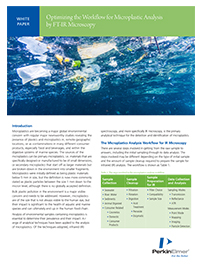Microplastics are becoming a major global environmental concern with regular major newsworthy studies revealing the presence of plastics and microplastics in remote geographic locations, or as contaminations in many different consumer products, especially food and beverages, and within the digestive systems of marine species.
Analysis of environmental samples containing microplastics is essential to determine their prevalence and their impact. A range of analytical techniques have been applied to the analysis of microplastics. Of the techniques adopted, infrared (IR) spectroscopy, and more specifically IR microscopy, is the primary analytical technique for the detection and identification of microplastics.
The different steps involved in getting from the raw sample to answers—including the initial sampling through to data analysis—are discussed in this article.

Just fill in the form below and immediately receive download instructions in an e-mail.
(if you are logged in some of the fields may already be filled in; all fields are required)

